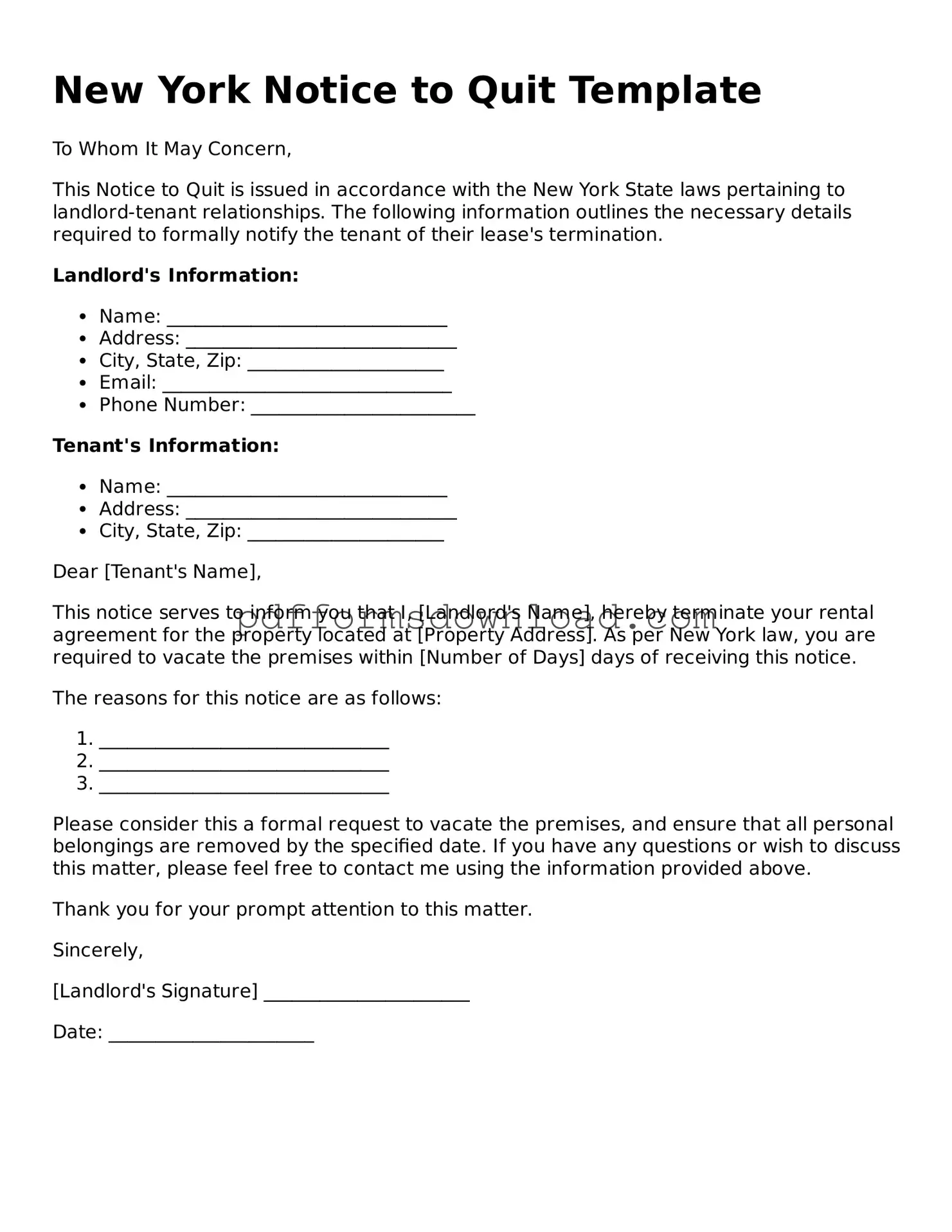What is a Notice to Quit in New York?
A Notice to Quit is a formal document used by landlords in New York to inform tenants that they must vacate the rental property. This notice typically arises when a tenant has violated the terms of their lease, such as failing to pay rent or causing damage to the property. The Notice to Quit serves as a first step in the eviction process, giving tenants a specified period to leave the premises before further legal action may be taken.
How long does a tenant have to respond to a Notice to Quit?
The time frame for a tenant to respond to a Notice to Quit can vary based on the reason for the notice. Generally, if the notice is for non-payment of rent, the tenant may have 14 days to pay the overdue rent or vacate the property. For other lease violations, the notice period can be as short as 10 days. It's essential for tenants to carefully read the notice to understand their specific obligations and timelines.
Can a tenant contest a Notice to Quit?
Yes, a tenant can contest a Notice to Quit. If a tenant believes the notice was issued incorrectly or that they have resolved the issue stated in the notice, they may choose to respond in writing or seek legal advice. If the matter escalates to court, the tenant will have the opportunity to present their case and defend against the eviction.
What should a landlord include in a Notice to Quit?
A landlord should include several key elements in a Notice to Quit. This includes the tenant's name, the address of the rental property, the reason for the notice, and the specific time frame the tenant has to vacate. Additionally, it’s important for the notice to be clear and concise, avoiding any ambiguous language that could lead to confusion.
Is a Notice to Quit required before filing for eviction in New York?
Yes, in most cases, a Notice to Quit is required before a landlord can file for eviction in New York. This notice acts as a legal prerequisite, providing tenants with an opportunity to address the issue before formal eviction proceedings begin. However, certain situations, such as illegal activity or severe lease violations, may allow a landlord to bypass this step.
What happens if a tenant ignores a Notice to Quit?
If a tenant ignores a Notice to Quit, the landlord may proceed with the eviction process. This typically involves filing a petition with the court to seek a judgment for eviction. If the court rules in favor of the landlord, a marshal may be authorized to remove the tenant from the property. Ignoring the notice can lead to significant legal consequences for the tenant.
